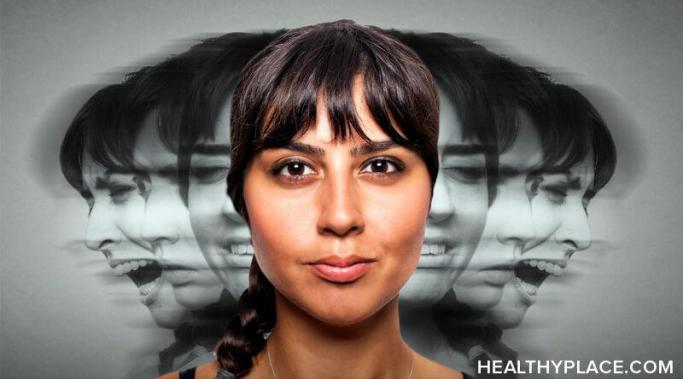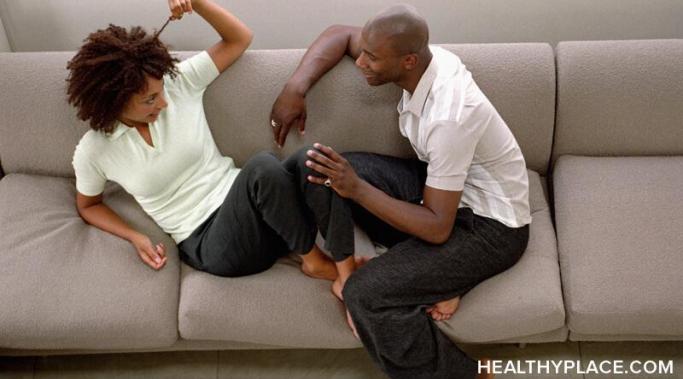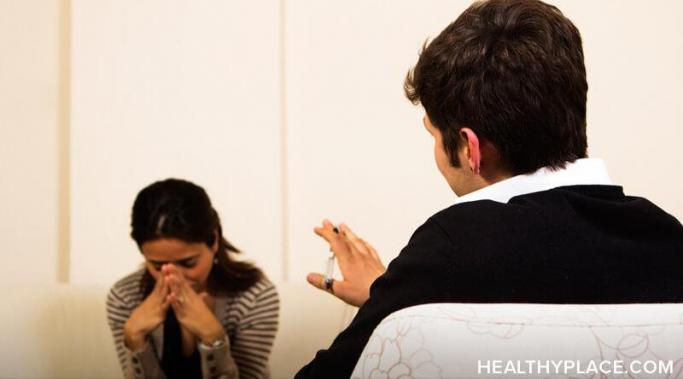More than Borderline
I've experienced suicidal thoughts with borderline personality disorder (BPD), so I thought I'd share my experience and some facts about suicide and BPD. The topic of suicide has received a large amount of attention in the media as of late with celebrity suicides. With the death of Kate Spade and Anthony Bourdain, it’s brought up old experiences and feelings about my own history as a woman living with borderline personality disorder. While I don’t feel this way today, I am no stranger to the feeling of not wanting to be alive. Self-harm, suicide attempts and suicidal thoughts are a part of living with borderline personality disorder. They are a distinguishing symptom when making this diagnosis. In the vein of opening up a conversation about suicide awareness, I’m going to share some important suicide facts and personal experience about suicidal thoughts and borderline personality disorder. Most importantly, I will share my hope.
Are you in a romantic relationship with someone with borderline personality disorder (BPD)? I want to acknowledge that handling conflict within relationships where one person may have borderline personality disorder can be a sensitive topic for many, especially when talking about romantic relationships. It’s a challenging topic for those living with the diagnosis and those in close proximity to us. For me, making relationships work with borderline personality disorder is not about blaming and pointing the finger. It’s about both parties learning to relate to one another in a way that is healthy, reciprocal, and loving. Today I’ll share a few suggestions in thinking about the conflict you may be having with your loved one with borderline and some tips in the video below for handling conflict within the context of BPD (Borderline Rage: What I Wish People Knew About BPD and Anger). I share just from my personal experience and what has worked for me.
What should you do if you think your loved one has borderline personality disorder (BPD)? As I write More than Borderline, I write it from different perspectives and with different life experiences. I write it as a young woman living with diagnosed borderline personality disorder. I also write it as a woman who has loved many with BPD and who has had friends, acquaintances, and loved ones throughout my life that have displayed BPD symptoms. It’s touched my life in numerous ways. Without help, I know it’s a challenge to live with it; I know it’s a challenge to love someone with it. It’s especially challenging when we live in a society that doesn’t talk about mental illness enough and loved ones can feel just as frustrated and hopeless. As I’ve been more public about my diagnosis, many loved ones of those with BPD have reached out to me with questions about what they can do. In the spirit of Mental Health Awareness Month, I’ll be breaking down some helpful considerations into a two-part post on loving someone with borderline personality disorder. So, what should you do if you think your loved one has BPD?
Letting go of borderline personality disorder (BPD) cycles of drama in recovery is important, but difficult. This might seem counterintuitive, but one of the hardest things for me to adjust to on my road to healing is simply learning to adjust to a calm and peaceful life. Those of us living with BPD get addicted to the highs and lows, the chaos, the crises, and the constant upheaval that comes along with living in emotionally intense states. Simply learning to tolerate when life is steady and serene can be a confusing new world, but it is possible to learn to tolerate stability and peace and to let go of the borderline cycles of drama.
Borderline personality disorder splitting (BPD), in its simplest form, is seeing the world through extremes (Borderline Personality Disorder Symptoms, Diagnosis). It’s a highly polarized way of perceiving the world around us. It’s a rigid way of perceiving things. It means someone always has to be "good" and another has to be "bad." In the video below, I’ll explain what borderline personality disorder splitting looks like for me and within this post, will explain ways I’ve learned not to split and to have a more realistic and balanced view of the world around me.
It's rare to find positive commentary on borderline personality disorder (BPD) traits. Negativity, stigma, insults, and fear are the most dominant narratives about BPD (What Borderline Personality Disorder Feels Like Inside). Whether you are living with BPD or you love someone with BPD, life doesn't have to be all doom and gloom. Is it possible there is an unforeseen positive side to living with this diagnosis? I believe the answer is yes. Those living with borderline personality disorder traits can also be creative, passionate, deeply grateful, and loyal women and men. We can learn to embrace the benefits of borderline personality disorder.
I fake smile on my bad days, but many people never know it. In fact, many people are surprised to learn that I am a woman living with borderline personality disorder (BPD). Some were surprised when I first started writing this blog because I didn't fit their ideas and molds ascribed to women living with this diagnosis (Stigma of BPD). I’m perceived by many as happy, joyful, well put together, composed, and intelligent. (As if these things are mutually exclusive from living with severe mental illness.) And the reality is that on many days, these words do describe me wholeheartedly. The thing about living with BPD (or any serious mental illness) is that the world keeps on spinning even on our darker and tougher days. Just because I’m going through it doesn’t mean my responsibilities and commitments cease. Fake smiles are actually important.
The dialectical behavior therapy (DBT) skill of mindfulness helps people with borderline personality disorder (BPD) practice radical acceptance of reality. Learning to tolerate life, exactly as it is in this moment, is a difficult struggle for any sufferer of BPD. At its core, BPD is fundamentally an attempt to escape intense pain and frantic efforts to avoid real or imagined fears of abandonment. We get ourselves into trouble trying to run away from reality and the uncomfortable feelings associated with living in reality. The DBT skill of mindfulness and radical acceptance work together to help me accept reality.
Learning what borderline personality disorder (BPD) feels like can clear up the misunderstandings and stigma associated with BPD. While behaviors on the outside may be interpreted as malicious or manipulative, what's actually going on on the inside of someone who is struggling with this illness? I believe with understanding comes compassion. With the video below, my hope is to shed a little bit of light as to what borderline anxiety, shame, and anger feel like on the inside.









